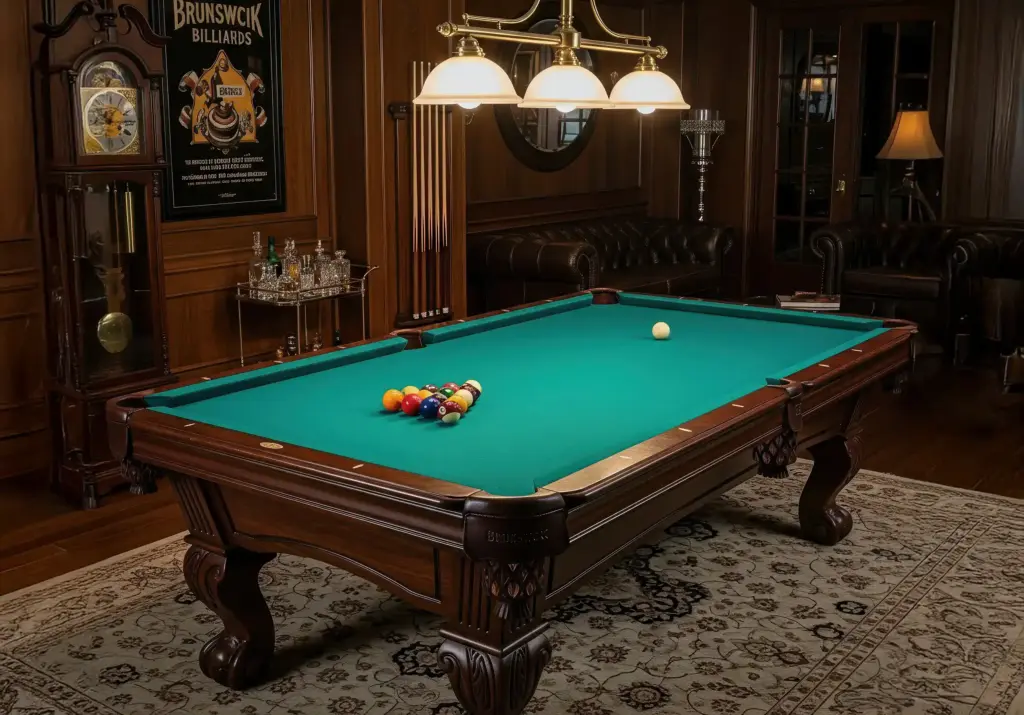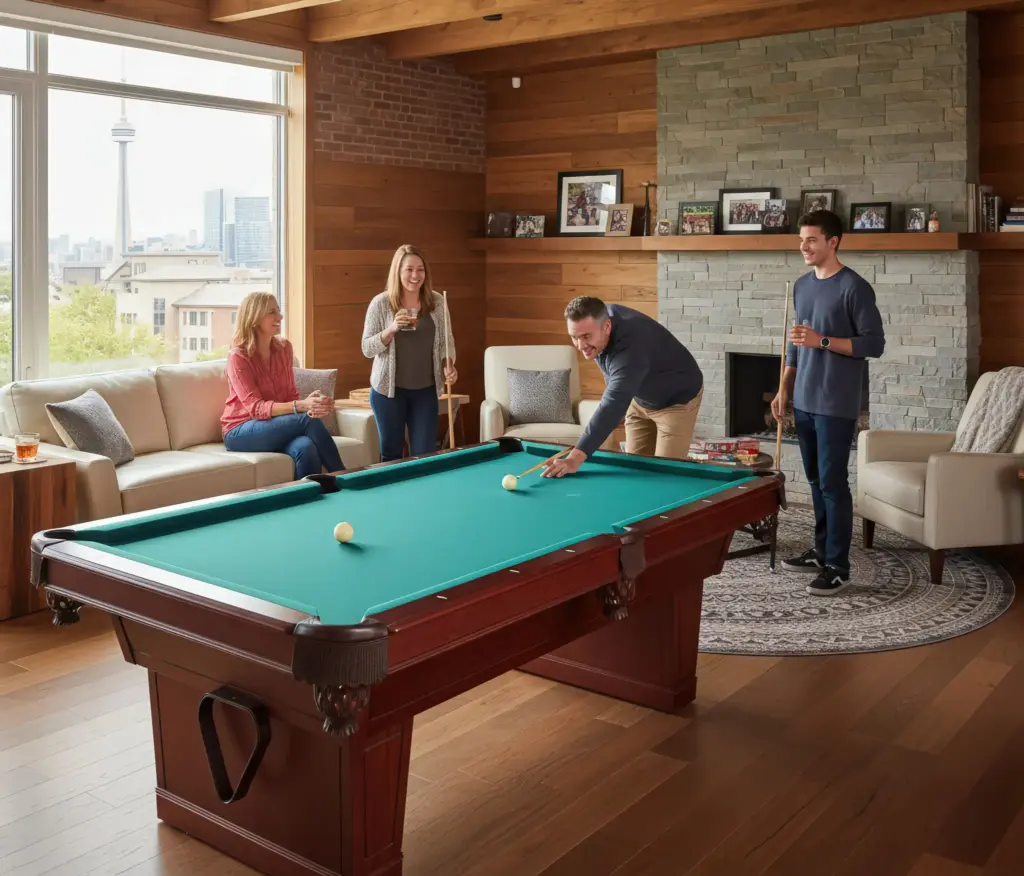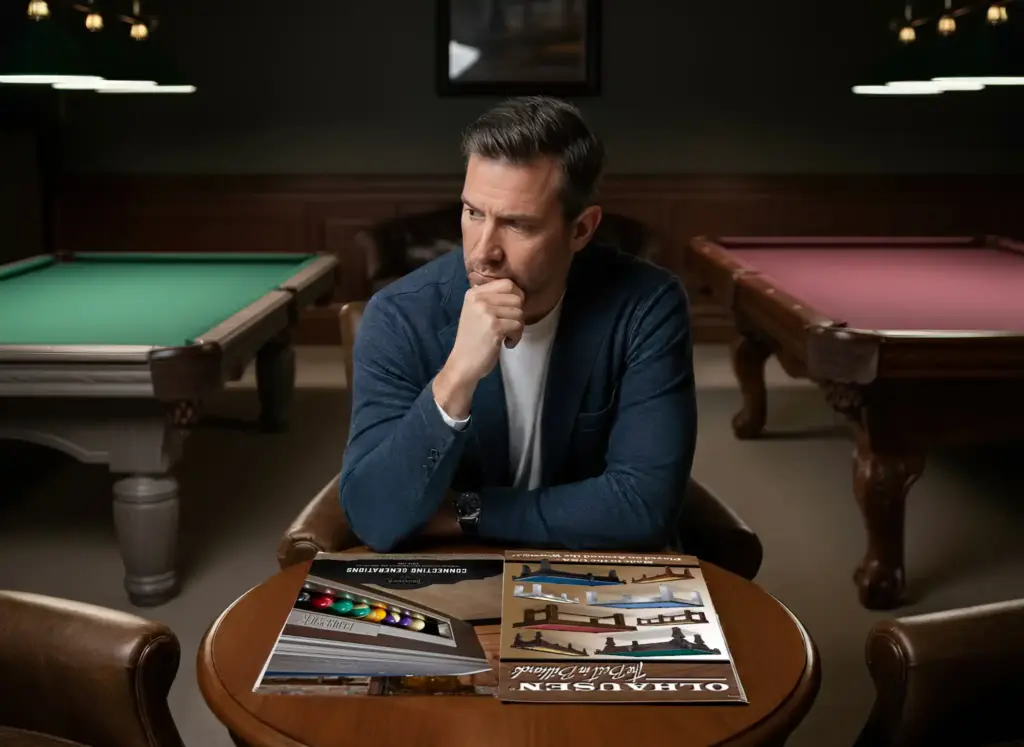Have you ever dominated the air hockey table at a local arcade, only to find your skills don’t translate to a friend’s high-end table? That frustrating plateau is a common experience. The frantic, reactive style that wins in a casual setting is often the very thing holding you back from true mastery. The gap between a casual player and a tournament contender is vast, built on a foundation of disciplined technique and sophisticated strategy that is rarely seen outside of the world of professional, competitive air hockey. This guide deconstructs the science behind the sport, drawing directly from the strategies perfected at the Air Hockey World Championships to transform your game from a pastime into a precision craft.
Key Takeaways
- Mastering the professional “finger grip” is the first and most critical step, unlocking the wrist for the power and deception that are impossible with a standard fist grip.
- Elite defense is not about blocking from the goal line but about proactive positioning using the “Triangle Defense,” holding the mallet 8–14 inches in front of the goal to cut down angles.
- Offensive success relies on “complimentary shots”—making different shots look identical upon release to deceive the defender, rather than simply relying on speed.
- The world of professional air hockey, governed by bodies like the USAA, uses standardized 8-foot tables, making casual arcade skills non-transferable.
- Top players like Colin Cummings build their offense around controlled “drifting” and advanced puck control techniques like the “Diamond Drift” to set up their attacks.
What Are the Foundational Skills of Professional Air Hockey?
The journey from amateur to expert begins by unlearning bad habits and building a new foundation. In professional air hockey, success is built on a tripod of fundamentals: the equipment, the grip, and the stance. The United States Air Hockey Association (USAA) and the Air Hockey Players Association (AHPA) sanction tournaments that are played exclusively on standardized 8-foot tables, most commonly from brands like Gold Standard Games and Dynamo. This consistency, outlined in the USAA Official Rules, eliminates the variables of arcade tables, ensuring that skill, not adaptation to a faulty blower, determines the winner.
The single most significant technical difference is the air hockey grip. Amateurs use a “fist grip,” which locks the wrist and limits shots to predictable arm movements. Professionals use a “finger grip,” holding the mallet behind the knob with their fingertips. This unlocks the wrist, generating explosive puck speed through a whipping motion and enabling the subtle deceptions that define an elite offense. While it can be uncomfortable at first, mastering this grip is non-negotiable for advanced play.
This grip is supported by an athletic stance. A professional player stands balanced on the balls of their feet with knees bent, ready for rapid lateral movement. The non-playing hand rests on the side rail, creating a stable pivot point to channel power from the entire body into a shot, transforming it from a simple push into a controlled, powerful strike. To truly advance, players must actively unlearn the common flaws of casual play, which champion Tim Weissman calls the “7 Deadly Sins of Air Hockey.”
| The Sin (Amateur Flaw) | The Professional Correction |
| 1. Beginner Grip | Adopt the “Three-Finger Grip” behind the mallet knob to unlock wrist action for power and deception. |
| 2. Wildman Volleying | Cease frantically smacking the puck. Instead, gain possession, deaden the puck, and set up a controlled shot. |
| 3. Beginner Defense | Abandon defending from the back wall. Employ the “Triangle Defense” with the mallet held 8–14 inches out from the goal. |
| 4. Flat Footed | Get on the balls of your feet in an athletic stance to enable rapid, explosive movement for both offense and defense. |
| 5. Charge Disease | Stop lunging wildly. A “charge” is a calculated, high-risk maneuver to be used sparingly and with total commitment. |
| 6. Poor Puck Position | Do not shoot from wherever the puck happens to be. Use “drifting” to move the puck to an optimal striking position. |
| 7. Weak Puck Control | Develop the ability to receive and bring a puck under complete control without it bouncing away. |
How Do Champions Defend the Goal?
In the high-speed world of competitive play, defense is a proactive system of control, not a desperate reaction. The core of all modern air hockey strategy on defense is the “Triangle Defense” (or “Pyramid Defense”). This technique is counter-intuitive to beginners because the mallet is held significantly out from the goal, typically between 8 and 14 inches. From this forward position, the mallet moves in a tight triangular pattern to cover the goalposts. The geometric advantage is immense; by moving the defense forward, the player dramatically cuts down the angles of attack, requiring much less lateral movement to cover the goal than defending from the back wall.
However, the true art of this defense lies in its philosophy. The goal is not merely to block the puck, but to gain possession. Instead of a rigid block that rebounds the puck to the opponent, an elite defender performs a subtle “pull back” motion at the moment of impact. This cushions the puck, deadening its momentum and allowing the defender to take control. This single action turns a dangerous threat into a controlled offensive opportunity. The Triangle Defense is not static; it “floats” and “re-centers” constantly, with the defender making micro-adjustments to keep their mallet on a direct line between the puck and the center of the goal as the opponent drifts the puck side-to-side.
What Air Hockey Techniques Create an Unstoppable Offense?
A world-championship offense is a science of deception built on superior puck control. The engine of every attack is “drifting”—the controlled movement of the puck on one’s own side of the table. Instead of immediately smacking the puck back, a pro gains possession and initiates a drift to force the defender to move and create an opening. Advanced players like the dominant world champion Colin Cummings have mastered complex patterns like the “Diamond Drift,” moving the puck in a fluid, continuous motion to mesmerize the defender and mask the timing of the eventual shot.
This control is used to set up “complimentary shots.” This is the philosophy of making two or three different shots—for example, a straight “cut shot” and a “bank shot”—look identical upon release. The offensive player uses their initial body and mallet motion to “sell a lie,” baiting the defender to move to block one anticipated shot, only to execute a different one into the now-vacant lane. This system, perfected by champions like Billy Stubbs, elevates the game to a psychological battle where the defender is beaten by deception, not just speed. The arsenal includes straight shots like the “Cross” and “Cut,” and various “Bank Shots” off the rails.
What Is the Mental Strategy in Professional Air Hockey?
At the Air Hockey World Championships, where physical skills are nearly equal, matches are won in the mind. The mental game begins before the first face-off, with champions analyzing an opponent’s grip, stance, and mallet position to form a hypothesis about their defensive weaknesses. An amateur “claw grip,” for example, might signal a vulnerability to hard, straight shots.
The game then becomes a fluid experiment. If an initial strategy fails, a champion methodically adapts, varying shot selection, altering the tempo with delays, and changing drift patterns to find a crack in the defense. They may even be willing to lose an early game in a series to “download” the necessary data to win the match.
Finally, champions are masters of psychological disruption. They change the pace of play, shifting from fast attacks to slow, deliberate drifts to break an opponent’s rhythm. They use body language to sell fakes and deploy strategic timeouts to “ice” an opponent who has gained momentum. This mental fortitude and strategic thinking are what separate the best from the rest in professional air hockey.
Frequently Asked Questions (FAQ)
What is the most important air hockey technique for a beginner to learn?
- The single most important technique is the professional “finger grip.” Gripping the mallet behind the knob with the fingertips unlocks the wrist, which is essential for generating the power and deception needed for all advanced offensive shots.
Why is the Triangle Defense so effective?
- The Triangle Defense is effective because it is based on geometry. By holding the mallet 8–14 inches in front of the goal, a player significantly reduces the angles an opponent can shoot at. This means the mallet has to travel a much shorter distance to block shots to either corner compared to defending from the back wall.
Who is Colin Cummings?
- Colin Cummings is widely regarded as the most dominant modern professional air hockey player. He won his first AHPA World Championship at age 16 and has since won a record number of USAA World titles. He is also recognized by Guinness World Records as the highest-rated air hockey player.
What kind of table is used in the Air Hockey World Championships?
- The Air Hockey World Championships and all other USAA and AHPA-sanctioned tournaments are played exclusively on standardized 8-foot air hockey tables from approved manufacturers like Gold Standard Games and Dynamo.
Conclusion
Transitioning from a casual player to a formidable opponent requires a fundamental shift in approach. The path to mastering professional air hockey is built on four pillars: technical precision, defensive discipline, offensive deception, and mental fortitude. It begins with unlearning common habits and deliberately practicing the core fundamentals, like the professional grip and the athletic stance. From there, it involves mastering the proactive system of the Triangle Defense and building an arsenal of complimentary shots powered by controlled drifting. Finally, it’s about developing the strategic mind of a champion—the ability to analyze, adapt, and control the psychological flow of the game. The key takeaway is this: mastery is not about hitting the puck harder, but about hitting it smarter. By adopting the systematic approach of the world’s best, any player can elevate their game to a new level.
For expert advice on selecting a professional-grade air hockey table for your home, contact Hallmark Billiards today.




